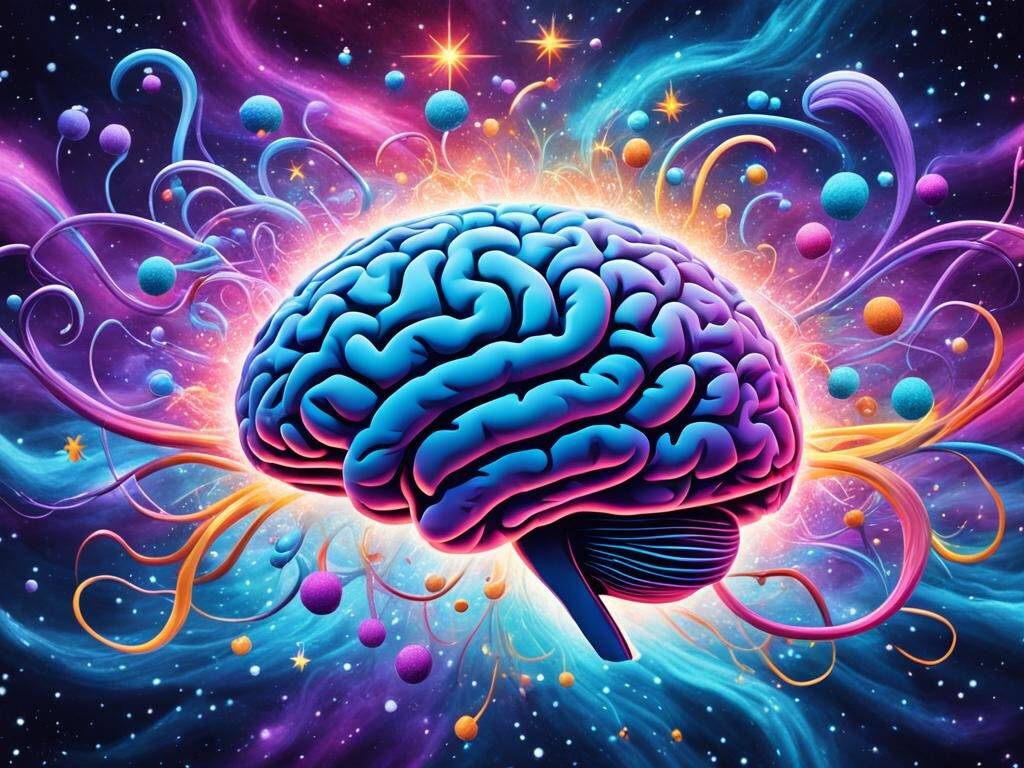Welcome to the intriguing world of dreams, where our subconscious mind speaks to us in hidden messages and symbols. Have you ever wondered what lies within your dreams? What secrets does your inner mind hold? Let’s embark on a journey of exploration and unravel the mysteries of dreams and their interpretations.
As humans, we spend a significant portion of our lives sleeping and dreaming. But what do these nightly stories really mean? Are they simply random images or do they hold deeper significance? In this article, we will dive into the realm of dreams, exploring their meanings, symbolism, and the fascinating insights they offer into our subconscious minds.
Through the practice of dream interpretation, we will decode the language of our dreams and gain a greater understanding of ourselves. Dreams have the power to shed light on our emotions, experiences, desires, and even provide guidance for problem-solving and personal growth.
So, are you ready to unlock the secrets hidden within your dreams? Join us on this journey as we explore the depths of our inner minds, one dream at a time.
Key Takeaways
- Dreams are not random but carry meaning and symbolism.
- Different types of dreams offer unique insights into our subconscious mind.
- The science behind dreaming involves REM sleep and specific brain structures.
- Dreams can aid in problem-solving and provide creative insights.
- Analyzing dream symbols can reveal subconscious thoughts and emotions.
The Meaning of Dreams
Dreams are not mere random sequences of images and events that occur while we sleep. They carry profound meaning and symbolism, providing a window into our subconscious mind. By exploring the significance behind dreams, we can gain valuable insights into our emotions, experiences, and desires.
Through dream interpretation, we can unravel the hidden messages within our dreams and uncover the deeper layers of our psyche. Dreams often reflect our innermost thoughts, feelings, and conflicts, allowing us to better understand ourselves and the world around us.
Symbolism plays a crucial role in dream analysis. Our dreams are filled with symbols that represent various aspects of our lives and inner struggles. These symbols can be highly personal or universal archetypes that carry profound meaning.
Our dreams hold a mirror to our deepest selves, reflecting our fears, hopes, and aspirations. They offer a glimpse into our subconscious mind, which can guide us on our journey of self-discovery and personal growth.
Symbolism in Dreams
The symbolism in dreams can be vast and diverse, encompassing a wide range of objects, actions, and settings. Each symbol holds unique significance, and its interpretation varies depending on the individual’s personal experiences and cultural background.
Common dream symbols include:
- Water: represents emotions, purification, and renewal
- Flight: symbolizes freedom, escape, or the ability to rise above challenges
- Animals: represent instincts and primal desires
- Death: signifies the end of a phase or transformation
These symbols can be analyzed in the context of the dreamer’s unique life circumstances and emotional state. By exploring the symbolism in our dreams, we can gain valuable insights and navigate the complexities of our inner world.

A Sample Table Illustrating Symbolism in Dreams:
| Symbol | Meaning |
|---|---|
| Water | Representing emotions, purification, and renewal |
| Flight | Symbolizing freedom, escape, or the ability to rise above challenges |
| Animals | Reflecting instincts and primal desires |
| Death | Signifying the end of a phase or transformation |
Types of Dreams
Dreams are a fascinating phenomenon that take on various forms, each with its own unique characteristics. Exploring the different types of dreams provides us with valuable insights into our subconscious mind and the inner workings of our psyche. One intriguing type of dream that has gained significant attention is lucid dreaming.
The World of Lucid Dreaming
Lucid dreaming is a state of dreaming where the dreamer becomes aware that they are dreaming, thus enabling them to have some level of control over the dream narrative and experience. This type of dream allows individuals to consciously participate in their dreams, engaging in activities, exploring new environments, or even practicing skills and abilities.
Lucid dreaming opens up exciting possibilities for personal growth and self-exploration. By harnessing the power of lucid dreaming, individuals can unleash their creativity, face their fears, or delve into the depths of their subconscious mind.

| Types of Dreams | Characteristics |
|---|---|
| Nightmares | Evoke intense fear, anxiety, and distress during sleep |
| Recurring Dreams | Repeated dreams often related to unresolved issues or recurring patterns in life |
| Prophetic Dreams | Foretell future events or provide insights into upcoming situations |
| Adventure Dreams | Exciting and thrilling dreams involving exploration, adventure, and new experiences |
| Symbolic Dreams | Contain a rich tapestry of symbols and metaphors representing deeper meanings and emotions |
These are just a few examples of the diverse range of dreams that people experience. Whether you find yourself in a lucid dream, a nightmare, or a prophetic dream, each type offers a unique glimpse into the incredible realm of dreams and their profound impact on our lives.
The Science Behind Dreaming
Have you ever wondered what happens in our brain when we dream? The science of dreaming provides fascinating insights into this mysterious phenomenon. One key aspect of dreaming is known as REM sleep, which stands for Rapid Eye Movement sleep. During REM sleep, our brain activity increases, and vivid and intense dreams occur.
REM sleep is a distinct stage of sleep characterized by rapid eye movements, increased brain activity, and muscle paralysis. It plays a crucial role in the process of dreaming and is closely linked to the cognitive and emotional aspects of our dreams.
During REM sleep, the brain structures involved in memory consolidation, emotional processing, and creativity are highly active. This heightened brain activity allows for the creation of elaborate dream scenarios and the processing of emotions that are often experienced during dreams.

Image: An illustration depicting REM sleep, the stage of sleep associated with the most vivid dreams.
The science of dreaming has revealed fascinating insights into the purpose and mechanisms behind this enigmatic process. The role of REM sleep, in particular, has been extensively studied and is considered essential for the occurrence of dreams.
Research suggests that dreaming serves several functions, including memory consolidation, emotional regulation, and problem-solving. Dreams provide a means for our brain to process and integrate information gathered throughout the day, helping us make sense of our experiences and emotions.
Understanding the science behind dreaming allows us to appreciate the complexity and significance of this nightly occurrence. By unraveling the mysteries of the dreaming mind, we gain valuable insights into the workings of our subconscious and the inner workings of our brain.
The Role of REM Sleep
A closer look at REM sleep and its role in dreaming can provide a deeper understanding of this fascinating phenomenon. Let’s explore the key characteristics of REM sleep:
| Characteristics of REM Sleep | Description |
|---|---|
| Rapid Eye Movements | During REM sleep, our eyes move rapidly in all directions. This distinctive feature gives REM sleep its name. |
| Increased Brain Activity | The brain activity during REM sleep is similar to that of wakefulness. This heightened activity supports the formation of dream scenarios. |
| Muscle Paralysis | During REM sleep, the brain sends signals to inhibit muscle movement, effectively preventing us from acting out our dreams. |
Table: Characteristics of REM Sleep
The Role of Dreams in Problem-Solving
Dreams have long been regarded as a source of problem-solving and creative insights. When we dream, our subconscious mind takes center stage, presenting us with unique perspectives and innovative ideas to tackle challenges in our waking lives. Through problem-solving dreams, we can tap into the vast reservoir of our subconscious and unlock hidden solutions.
During REM (Rapid Eye Movement) sleep, the stage of sleep associated with vivid dreaming, our brain processes information and consolidates memories. This cognitive activity allows our mind to connect seemingly unrelated ideas and generate novel solutions to complex problems.
In the words of Salvador Dalí, the renowned surrealist artist, “Give me two hours a day of activity, and I’ll take the other twenty-two in dreams.”
Scientific research supports the notion that dreams can enhance problem-solving abilities. In a study published in the journal Nature, researchers found that individuals who were allowed to sleep and dream about a problem were more likely to uncover solution-oriented insights compared to those who remained awake.
Dream Incubation
One technique that can enhance problem-solving dreams is dream incubation. Dream incubation involves consciously focusing on a specific problem or question before sleep, intending to receive guidance or creative insights through dreams. By priming our minds with a problem or challenge, we invite our dreams to become problem-solving workshops.
To practice dream incubation, follow these steps:
- Before going to bed, clearly define the problem or question you want to address in your dream. Write it down in a dream journal or repeat it in your mind.
- Visualize a desired outcome or potential solution as you drift off to sleep.
- As you wake up, take a moment to reflect on any dream fragments or insights related to your problem. Record them in your dream journal.
By engaging in dream incubation, you create a focused intention that activates your subconscious mind, allowing it to work on problem-solving during the dream state. This technique can offer valuable guidance and fresh perspectives that may not have surfaced in your conscious thinking.
| Benefits of Problem-Solving Dreams | Examples |
|---|---|
| Enhanced creativity | Walt Disney famously dreamt of Disneyland before bringing it to life. |
| Insightful problem-solving | Paul McCartney composed the melody for the iconic song “Yesterday” in a dream. |
| Alternative perspectives | Albert Einstein attributed his theory of relativity to a dream that sparked his imagination. |
Problem-solving dreams can be a powerful tool for overcoming challenges and generating innovative ideas. Whether you’re seeking a breakthrough in your work, personal life, or creative pursuits, paying attention to your dreams and actively engaging in dream incubation can lead to valuable insights and solutions.

Analyzing Dream Symbols
Dreams are a mysterious realm where our subconscious thoughts and emotions manifest through symbolic imagery. Analyzing dream symbols is an essential step in unlocking the hidden messages they convey. By understanding the meaning behind these symbols, we can gain valuable insights into our innermost desires, fears, and aspirations.
When it comes to dream analysis, it’s important to approach it with an open mind and a willingness to explore the deeper layers of our subconscious. Let’s take a closer look at some techniques that can help us unravel the significance of dream symbols:
- Personal Association: Dream symbols are often highly subjective and can vary from person to person. Pay attention to the feelings, emotions, and personal connections that arise when analyzing a specific symbol. Your individual experiences and beliefs play a crucial role in deciphering the symbolism behind your dreams.
- Contextual Analysis: Consider the context in which the dream symbol appears. Take note of the overall dream narrative, the setting, and the interactions with other dream characters or objects. These details provide important clues for interpreting the symbol within the larger context of your dream.
- Symbolic Meanings: Consult dream dictionaries or resources that provide interpretations of common dream symbols. While these references can be helpful, remember that dream symbolism is highly personal. Use them as guidelines rather than strict interpretations and adapt them to resonate with your unique experiences.
- Dream Journaling: Keeping a dream journal helps you track recurring symbols and patterns within your dreams. This practice enables you to identify common themes and gain insight into their significance over time. Write down every detail you can recall upon waking, including emotions, colors, and any other sensations associated with the dream.
By combining these techniques, you can begin to piece together the puzzle of dream symbols and understand their deeper meanings. Remember, dream analysis is a creative and introspective process that requires patience and self-reflection. Trust your intuition and allow your subconscious to guide you in deciphering the messages hidden within your dreams.

Through analyzing dream symbols, we can gain insight into our subconscious thoughts and emotions. These symbols act as signposts, guiding us towards a greater understanding of ourselves and our inner world. Keep exploring the fascinating realm of dreams and uncover the secrets that lie within!
Unraveling Recurring Dreams
Recurring dreams have a way of captivating our attention, as they often hold a deeper significance. These dreams tend to highlight unresolved issues or recurring patterns in our lives, providing valuable insights into our subconscious mind. By delving into the interpretation of recurring dreams, we can unlock their underlying meanings and gain a better understanding of ourselves.
When we experience recurring dreams, it’s important to pay attention to the emotions, symbols, and themes that frequently appear. These repetitive elements serve as clues, guiding us towards a deeper understanding of our thoughts and emotions.
One popular theory regarding recurring dreams is that they represent unresolved conflicts or issues that we haven’t fully addressed in our waking lives. These dreams may be our mind’s way of nudging us to confront these challenges or make positive changes. By decoding the messages within recurring dreams, we can uncover hidden truths and take steps towards personal growth and healing.
For example, let’s say you frequently dream about being chased. This recurring theme may symbolize running away from something in your waking life, be it a fear, responsibility, or a difficult situation. By exploring the emotions evoked by the dream and identifying what you are fleeing from, you can gain insight into the areas of your life that require attention and resolution.
Recurring dreams can also indicate patterns or habits that keep repeating in our lives. This could be recurring relationship dynamics, career challenges, or personal struggles that we find ourselves grappling with repeatedly. By recognizing these patterns and understanding their origins, we can break free from negative cycles and create positive change.
It’s important to note that the interpretation of recurring dreams is highly personal. While certain symbols and themes may have common interpretations, the true meaning of a dream can only be understood through the lens of the dreamer’s unique experiences and emotions. Keeping a dream journal can be a helpful tool in recording and analyzing recurring dreams, allowing for greater self-reflection and understanding.
“Recurring dreams serve as mirrors into our inner world, reflecting unresolved issues and recurring patterns. By unraveling the messages hidden within these dreams, we can embark on a journey of self-discovery and transformation.”
In the next section, we’ll explore nightmares and dream anxiety, uncovering their causes and providing tips for coping with these unsettling dreams.

Nightmares and Dream Anxiety
Nightmares and dream anxiety can be distressing experiences that disrupt our sleep and leave us feeling unsettled. These intense dreams often evoke strong emotions, fear, and anxiety, affecting our overall well-being. Understanding the causes of nightmares and learning strategies to cope with them can help alleviate the distress and unlock the messages they may hold.

The Causes of Nightmares
Nightmares can stem from a variety of factors, including:
- Stress and anxiety: High levels of stress and anxiety can trigger nightmares, as the mind processes and tries to cope with these intense emotions during sleep.
- Traumatic experiences: Past trauma or unresolved issues can manifest in nightmares, as our subconscious mind tries to process and heal from these experiences.
- Medications and substances: Certain medications, illicit drugs, or alcohol can disrupt normal sleep patterns and contribute to nightmare occurrences.
- Sleep disorders: Conditions such as sleep apnea or insomnia can increase the likelihood of nightmares, as interrupted sleep can affect dream cycles.
Coping with Nightmares
While nightmares can be distressing, there are techniques and coping strategies that can help manage and minimize their impact:
- Maintain a calming bedtime routine: Establish a relaxing routine before bed, such as taking a warm bath or practicing deep breathing exercises, to promote a sense of calmness and reduce the likelihood of nightmares.
- Create a peaceful sleep environment: Eliminate distractions, keep the sleep environment comfortable and conducive to sleep, and ensure a regular sleep schedule to optimize restorative sleep.
- Manage stress and anxiety: Engage in stress-reducing activities, like meditation or mindful exercises, to alleviate anxiety and promote relaxation before sleep.
- Seek therapy or counseling: If nightmares persist and significantly impact daily life, consider seeking professional help from therapists specializing in dream analysis or trauma processing.
“Having an understanding of the underlying causes can help demystify nightmares and provide individuals with a sense of control and empowerment in managing their dreams.”
Understanding the Messages in Nightmares
Although nightmares can be unsettling, they often carry symbolic messages and valuable insights. Exploring these messages can aid in personal growth and self-reflection. Here are some tips for understanding the messages behind nightmares:
- Keep a dream journal: Recording dreams in a journal can help identify recurring themes and patterns, enabling a deeper exploration of the underlying meanings.
- Reflect on emotions: Pay attention to the emotions evoked by nightmares, as they can provide clues to unresolved feelings or issues in waking life.
- Use symbolism: Analyze the symbolic elements in nightmares to gain a deeper understanding of subconscious thoughts and fears.
By acknowledging and interpreting the messages within nightmares, individuals can integrate their subconscious experiences into their waking lives, leading to personal growth and a healthier relationship with dreams.
| Coping Strategies | Benefits |
|---|---|
| 1. Establish a calming bedtime routine | – Promotes relaxation before sleep – Reduces the likelihood of nightmares |
| 2. Create a peaceful sleep environment | – Optimizes restorative sleep – Minimizes disturbances that can trigger nightmares |
| 3. Manage stress and anxiety | – Alleviates anxiety before sleep – Reduces the frequency of nightmares |
| 4. Seek therapy or counseling | – Provides professional support and guidance for processing nightmares – Facilitates healing from trauma or unresolved issues |
Tips for Remembering Dreams
Have you ever had an incredible dream that faded away moments after waking up? It can be frustrating when these vivid experiences slip from our memory so quickly. Fortunately, there are techniques you can use to improve dream recall and hold onto those precious dream memories. One particularly effective method is dream journaling.

Dream journaling involves keeping a dedicated journal or notebook by your bedside, ready to capture your dreams as soon as you wake up. Before you start your day, take a few moments to write down any details you can remember about your dream. Even if you can only recall fragments or emotions, jot them down. Over time, this practice will help train your brain to remember more of your dreams and their intricacies.
“Dream journaling is like building a bridge between your unconscious and conscious mind. By writing down your dreams, you reinforce the pathways that connect these two realms, facilitating better dream recall.”
To make your dream journaling experience even more effective, consider incorporating the following tips:
- Create a bedtime routine: Establishing a regular sleep schedule and winding down before bed can improve the quality of your sleep, making it easier to recall dreams upon waking.
- Set the intention to remember your dreams: Before you go to sleep, repeat a mantra or affirmation, such as “I will remember my dreams tonight.” By setting this intention, you prime your mind to focus on dream recall.
- Keep your dream journal handy: Place your dream journal and a pen or pencil within easy reach of your bed. This convenience ensures that you can capture your dreams before they slip away.
- Record emotions and sensations: In addition to writing down the details of your dream, don’t forget to include any emotions or physical sensations you experienced during the dream. These elements can provide valuable insights during dream analysis.
Try implementing these tips into your routine and watch as your dream recall improves. With a consistent practice of dream journaling and an intention to remember, you’ll be amazed at how much more you’ll remember about your dreams and the fascinating stories they hold.
| Dream Journaling Tips | Benefits |
|---|---|
| Create a bedtime routine | Improves sleep quality and dream recall |
| Set the intention to remember your dreams | Primes your mind for dream recall |
| Keep your dream journal handy | Allows for immediate dream capture |
| Record emotions and sensations | Provides deeper insights into dream experiences |
Interpreting Common Dream Themes
Our dreams often contain recurring themes that transcend individual experiences. These common dream themes can provide valuable insights into our subconscious mind and offer universal symbols and meanings. By analyzing these themes through dream analysis techniques, we can unravel the hidden messages they hold and gain a deeper understanding of ourselves.
Universal Dream Themes
Below are some of the most common dream themes that people from different cultures and backgrounds frequently encounter:
- 1. Flying: Flying dreams symbolize a sense of freedom, liberation, or a desire to escape from certain situations.
- 2. Falling: Falling dreams often signify feelings of insecurity, lack of control, or a fear of failure.
- 3. Being chased: Being chased in dreams typically reflects underlying anxieties, unresolved issues, or feeling pursued by responsibilities or obligations.
- 4. Teeth falling out: Dreams involving teeth falling out can represent a fear of loss, a loss of confidence, or difficulties in communication.
- 5. Being naked in public: Dreams of being nude in public usually stem from feelings of vulnerability, fear of judgment, or a sense of exposing one’s true self.
- 6. Being unprepared for a test: Dreams of being unprepared for a test often manifest from anxieties about performance, being judged, or a fear of failure.
These are just a few examples of common dream themes that people of all backgrounds experience. By exploring the potential interpretations and symbolic meanings of these recurring themes, we can gain valuable insights into our emotions, fears, desires, and personal growth opportunities.
“Dreams are the touchstones of our character.” – Henry David Thoreau
Understanding the significance of common dream themes requires a comprehensive approach to dream analysis. By considering the context, personal experiences, emotions, and symbols within the dream, we can unlock the deeper messages that our subconscious mind is trying to communicate.
| Dream Theme | Possible Interpretations |
|---|---|
| Flying | A desire for freedom or a need to rise above challenges |
| Falling | Insecurity, lack of control, or fear of failure |
| Being chased | Anxieties, unresolved issues, or feeling pursued by responsibilities |
| Teeth falling out | Fear of loss, loss of confidence, or difficulties in communication |
| Being naked in public | Vulnerability, fear of judgment, or exposing one’s true self |
| Being unprepared for a test | Anxieties about performance, being judged, or fear of failure |
By exploring these common dream themes and their interpretations, we can gain a deeper understanding of ourselves and the hidden messages within our dreams. Dream analysis allows us to tap into the vast realm of our subconscious mind and use it as a powerful tool for self-reflection, personal growth, and transformation.

Using Dream Interpretation for Self-Reflection
Dream interpretation is not just about understanding the meaning behind our dreams; it is also a powerful tool for self-reflection and personal growth. When we analyze our dreams, we gain valuable insights into our inner thoughts, emotions, and desires, allowing us to embark on a journey of self-discovery.
Our dreams often provide glimpses into our deepest fears, aspirations, and unresolved issues. By paying attention to the symbols, themes, and emotions within our dreams, we can uncover hidden aspects of ourselves and gain a better understanding of our subconscious mind.
Through dream interpretation, we can:
- Uncover unresolved emotions: Dreams frequently reflect our unexpressed feelings and emotions, providing us with an opportunity to process and release them.
- Gain insights into our desires: Dreams can reveal our secret desires and longings, helping us understand what truly matters to us.
- Explore our fears and anxieties: Nightmares and anxiety-provoking dreams often shed light on our fears and worries, enabling us to confront and overcome them.
- Discover hidden talents and strengths: Dreams can unveil untapped abilities and strengths that we may not be aware of in our waking life, encouraging personal growth and exploration.
By engaging in dream interpretation, we engage in a process of self-reflection, where we deeply examine ourselves. This practice allows us to achieve personal growth, make positive changes, and cultivate a deeper connection with our authentic selves.
Take a moment to reflect on the following quote:
“Dreams are the whispers of the soul, urging us to listen, explore, and grow.”
As we embark on this journey of self-reflection through dreams, let us embrace the transformative power of dream interpretation and unlock the potential for personal growth and self-discovery.

Benefits of Dream Interpretation for Personal Growth
| Benefits | Explanation |
|---|---|
| Increased self-awareness | Gain a deeper understanding of your thoughts, emotions, and desires. |
| Emotional healing | Uncover and process unresolved emotions, leading to healing and inner peace. |
| Increased problem-solving abilities | Tap into your subconscious mind for innovative solutions and fresh perspectives. |
| Improved self-confidence | Discover hidden talents and strengths that boost self-esteem and confidence. |
| Enhanced personal growth | Identify areas for improvement and make positive changes in your life. |
As we explore the depths of our dreams, let us embrace the transformative journey of self-reflection and personal growth that dream interpretation offers.
Dream Interpretation Techniques
When it comes to interpreting dreams, various methods and techniques can be employed to decipher their meaning. Understanding the symbolism and hidden messages in our dreams can provide valuable insights into our subconscious thoughts and emotions. In this section, we will explore popular dream interpretation techniques that can help unravel the mysteries of our dreams.
The Freudian Model
One prominent approach to dream analysis is the Freudian model, developed by renowned psychologist Sigmund Freud. According to Freud, dreams serve as a window into our unconscious mind and repressed desires. The Freudian model focuses on symbols, dream imagery, and the interpretation of manifest and latent content.
“Dreams are the royal road to the unconscious.”
Sigmund Freud
Freud believed that dreams contain hidden meanings and that every symbol in a dream holds significance. Analyzing these symbols can provide valuable insights into our thoughts and emotions that may be suppressed in our waking life.
The Jungian Approach
Another popular dream interpretation technique is the Jungian approach, developed by Swiss psychiatrist Carl Jung. According to Jung, dreams are not only influenced by personal experiences but also collective symbols and archetypes that are part of our shared human consciousness.
Jung emphasized the importance of understanding the context and personal associations of dream symbols. He believed that dreams reflect the balance and integration of our conscious and unconscious selves, offering a pathway to self-discovery and individuation.
By exploring the archetypal themes and symbols in our dreams, we can gain a deeper understanding of ourselves and uncover hidden aspects of our psyche.
Other Dream Interpretation Techniques
Besides the Freudian and Jungian approaches, there are numerous other dream interpretation techniques that can be utilized. These include:
- The Gestalt Approach: focusing on the overall structure and narrative of the dream.
- The Cognitive Approach: analyzing dreams from a cognitive psychology standpoint, examining the thought processes and schemas within the dream.
- The Symbolic Approach: interpreting dream symbols and their connections to personal experiences and emotions.
- The Active Imagination Technique: engaging in active dialogue and exploration with dream symbols through creative and imaginative methods.
Exploring these different techniques can provide a multifaceted approach to dream interpretation and enhance our understanding of the complex world of dreams.
By utilizing these dream interpretation methods and techniques, we can unlock the deeper meanings behind our dreams and gain valuable insights into our subconscious mind.
Dreams and Intuition
In the realm of dreams, our intuition acts as a guiding force, offering profound insights from our inner wisdom. Intuitive dreaming allows us to tap into this wellspring of knowledge and receive guidance that transcends the limitations of the conscious mind.
When we dream, our subconscious mind is free to wander, exploring the depths of our thoughts, emotions, and experiences. In this state, our intuitive abilities are heightened, enabling us to access hidden truths and intuitive perspectives that may elude us in our waking life.
Intuitive dreaming often manifests in various forms—vivid dreams, prophetic visions, or inexplicable sensations—that provoke a sense of knowingness and inner clarity. These dreams can provide valuable answers to pressing questions, solutions to dilemmas, or glimpses into future possibilities.
How can we harness the power of intuitive dreaming? It begins with cultivating a deep sense of self-awareness and receptivity to our dreams. By maintaining a dream journal and recording our dreams upon waking, we create a space for reflection and analysis. This process helps uncover recurring themes, symbols, and patterns that hold special significance and provide valuable insights.
Furthermore, paying attention to our gut instincts and trusting our intuition in waking life can amplify our ability to recognize and interpret intuitive messages within our dreams. It is through this synergy between waking intuition and dreaming intuition that we unlock the full potential of our inner guidance system.
“Intuition is a spiritual faculty and does not explain, but simply points the way.” – Florence Scovel Shinn
To illustrate the connection between dreams and intuition, consider the following example:
| Dream | Intuitive Interpretation |
|---|---|
| I am lost in a maze, feeling confused and disoriented. | This dream may signify a lack of direction or clarity in my waking life. My intuition is urging me to seek a new path and find greater alignment with my true purpose. |
| I see a bright and radiant sunrise over calm waters. | This dream may symbolize a period of transformation and renewal. My intuition is highlighting a time of inner growth and the emergence of new opportunities. |
| I receive a powerful message from a loved one who has passed away. | This dream may serve as a profound connection to the spiritual realm, providing comfort and guidance from the departed. My intuition is reminding me of the eternal bond shared with loved ones. |
By recognizing the interplay between our dreams and intuition, we can harness the transformative power of intuitive dreaming. Through self-reflection, journaling, and trust in our inner guidance, we unlock the mystic doorway to our subconscious, uncovering profound wisdom and invaluable insights along the way.

Dreams Across Cultures
Dreams have always been a fascinating aspect of human existence, and their interpretation varies widely across different cultures. Cultural perspectives and beliefs surrounding dreams provide valuable insights into the way societies perceive and assign meaning to these nocturnal experiences.
Dreams as Divine Messages
In many ancient cultures, dreams were considered divine messages that provided guidance, warnings, and prophecies. Ancient Egyptians, for example, believed that dreams were direct communication from the gods and often consulted dream interpreters, or hierophants, to decipher their meaning.
Shamans and Dream Guides
Indigenous cultures place great importance on dreams and often rely on shamans or dream guides to help interpret them. For Native American tribes, dreams hold spiritual significance, connecting individuals to their ancestors and spirit guides.
Dream Incubation
In certain cultures, such as ancient Greece and Egypt, individuals actively sought out dreams as a means of gaining insight or finding solutions to problems. The practice of dream incubation involved rituals and rituals performed to encourage vivid and meaningful dreams.
Symbolism and Interpretation
Symbolism plays a vital role in dream interpretation across cultures. While the specific symbols and their meanings may vary, common themes often emerge. For instance, water commonly symbolizes emotions and purification, while snakes can represent transformation and healing.
Modern Cultural Perspectives
Modern societies also hold diverse views on dreams. Some cultures view dreams as a window into the subconscious, offering opportunities for self-reflection and personal growth. Others may see dreams as mere random brain activity with no inherent meaning.
A Visual Representation of Cultural Perspectives on Dreams
Take a look at the interactive table below for a visual representation of cultural perspectives on dreams:
| Culture | Beliefs and Interpretation |
|---|---|
| Ancient Egypt | Dreams as divine messages; consulted hierophants for interpretation |
| Greek and Roman | Belief in dream incubation for seeking guidance and solutions |
| Native American | Spiritual connection to ancestors and spirit guides through dreams |
| Chinese | Interpretation based on symbolism and the context of dreams |
| Western | Varied perspectives, from symbolic to purely physiological interpretations |
Understanding dreams from different cultural perspectives adds depth and richness to our exploration of the subconscious mind. It emphasizes the importance of cultural context and individual experiences in dream interpretation.

Conclusion
In conclusion, dreams and dream interpretation provide a fascinating window into our subconscious mind. They offer valuable insights and personal growth opportunities, allowing us to better understand ourselves and unlock the mysteries of our inner mind.
By deciphering the messages hidden within our dreams, we can gain a deeper understanding of our emotions, experiences, and desires. Dreams carry meaning and symbolism, reflecting our subconscious thoughts and emotions. They can even aid in problem-solving and provide creative insights.
Analyzing dream symbols and unraveling recurring dreams can provide valuable clues to unresolved issues or recurring patterns in our lives. Even nightmares and dream anxiety can be understood and coped with, helping us navigate unsettling experiences.
Remembering dreams through techniques like dream journaling and interpreting common dream themes can enhance our understanding and self-reflection. Dreams are not confined to any one culture; they hold cultural significance and are interpreted differently across societies.
By exploring the vast world of dreams and embracing dream interpretation, we embark on a journey of self-discovery and personal growth. So let us pay attention to the messages our dreams carry and use them as a powerful tool for understanding ourselves and transforming our lives.

